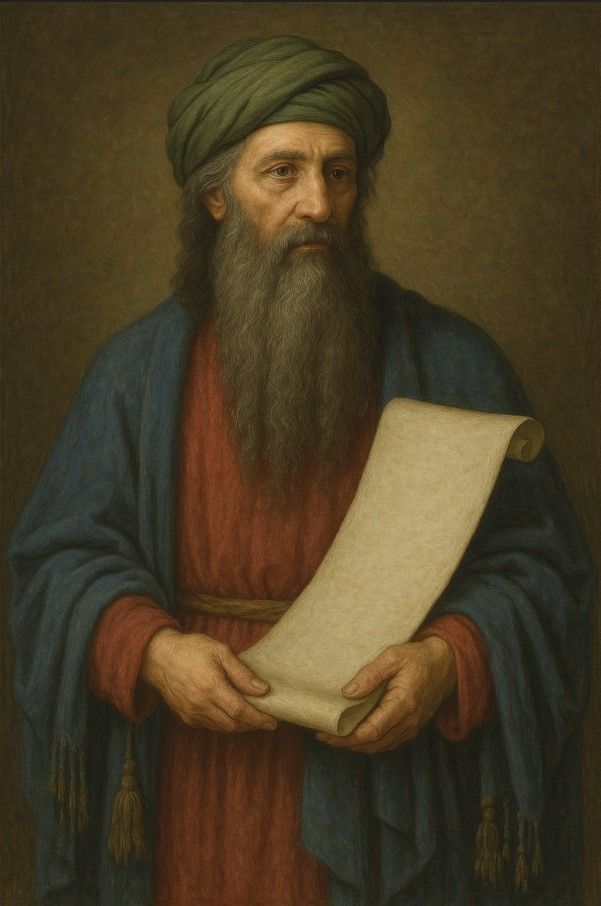🧔 Name: Daniel (Hebrew: דָּנִיֵּאל, Daniyyel, meaning "God is my judge")
📍 Place of Birth: Likely Jerusalem, Kingdom of Judah
📆 Approximate Years Lived:
-
Born: c. 620 BC
-
Died: c. 535–530 BC (some traditions suggest he lived into his 90s or even beyond 100)
These dates are approximate and based on the Babylonian exile timeline.
📖 Biblical Account: The Book of Daniel
Daniel is the central figure in the biblical Book of Daniel, which blends historical narrative (chapters 1–6) and apocalyptic visions (chapters 7–12).
Key Events in His Life:
🏛️ Historical and Political Influence
Daniel lived under the reign of at least four major kings:
-
Nebuchadnezzar II (Babylon)
-
Belshazzar (Babylon)
-
Darius the Mede (possibly a regent or governor under Persian rule)
-
Cyrus the Great (Persia)
He served as a high-ranking government official, likely as a vizier or chief administrator, due to his wisdom and ability to interpret dreams.
📚 Sources Outside the Bible
🔹 Jewish Tradition (Talmud and Midrash)
-
The Talmud (Sanhedrin 93b) regards Daniel as one of the wisest and most righteous men in Jewish history. But, really who cares what that source days, babblings of self righteous idiots.
-
Jewish tradition holds that #Daniel remained celibate and never returned to Jerusalem.
-
Some traditions suggest he was a eunuch, since he served in the king’s court (Isaiah 39:7 prophesied this fate for some of Hezekiah’s descendants).
🔹 Christian Tradition
-
Early church fathers like Jerome, who translated the Latin Vulgate, highly respected Daniel.
-
Daniel is seen as a type of Christ because of his innocence, suffering, and exaltation.
-
Jesus references Daniel by name in Matthew 24:15, quoting the abomination of desolation prophecy.
🔹 Islamic Tradition
-
Daniel (called Daniyal in Arabic) is not mentioned in the Qur'an but appears in Islamic historical and mystical writings.
-
Muslim tradition holds that Daniel was a prophet and wise man in Babylon, often linked to astrology and dream interpretation.
🏙️ Where Did Daniel Die?
There are several traditions:
-
Babylon (Iraq): Most likely. He lived in Babylon most of his life and probably died there.
-
Susa (Shushan in Elam): Some of his visions occurred here (Daniel 8:2), and a tomb of Daniel is located in modern-day Shush, Iran, where many locals and pilgrims venerate the site.
-
Some Islamic traditions also point to Kirkuk, Iraq or Mosul as burial locations, though these are less historically supported.
✍️ Did Daniel Write the Book of Daniel?
Traditional View:
-
Yes, Daniel is considered the author, especially of the first-person sections (Dan. 7–12). His detailed accounts and visions suggest eyewitness authorship.
Critical Scholarly View:
-
Some modern scholars date the final composition of the book to the 2nd century BC during the time of the Maccabean revolt, citing the precise fulfillment of earlier prophecies.
-
However, fragments of Daniel were found among the Dead Sea Scrolls (4QDan), dating to at least the 2nd century BC, supporting an earlier origin.
🔍 Character Traits and Legacy
-
Wisdom – Known for insight and understanding
-
Integrity – Refused to defile himself with the king’s food
-
Faithfulness – Prayed regularly, even under persecution
-
Courage – Faced death in the lion’s den for staying true to God
-
Prophetic Authority – Accurately foresaw the rise and fall of empires (Babylon, Medo-Persia, Greece, Rome, and more)
🕊️ Prophecies and Apocalyptic Themes
Daniel's visions contain some of the most important Messianic and apocalyptic prophecies in Scripture:
-
The Four Beasts (Daniel 7)
-
The 70 Weeks Prophecy (Daniel 9:24–27)
-
The Little Horn and the Abomination of Desolation
-
The Resurrection of the Dead (Daniel 12:2)
-
The Sealed Book Until the End (Daniel 12:4)
🏛️ Daniel's Impact Through History
-
Jewish History: Daniel is a revered prophet, especially during times of exile and persecution.
-
Christian Eschatology: Central to understanding end-time prophecies, Antichrist, and the return of Messiah.
-
Literature & Culture: Influenced books, movies, and art (e.g., Daniel in the Lions’ Den).
-
Moral Lessons: Integrity, courage, and faithfulness under pressure.
| Event | Approx. Date | Description |
|---|---|---|
| Deportation to Babylon | 605 BC | Daniel was taken to Babylon as a youth during the first deportation under King Nebuchadnezzar (Daniel 1:1–6). |
| Training in Babylon | ~600 BC | Selected for service in the king's court, Daniel and his friends refuse the king’s food and are found superior in wisdom (Dan. 1:8–20). |
| Interpretation of Nebuchadnezzar’s Dream | ~602 BC | Daniel interprets a statue dream symbolizing future empires (Dan. 2). |
| Fiery Furnace (Friends) | ~580 BC | Daniel’s friends Shadrach, Meshach, and Abednego survive the fiery furnace (Dan. 3). |
| Nebuchadnezzar's Madness | ~570 BC | Daniel interprets the king’s dream of a tree, predicting 7 years of insanity (Dan. 4). |
| Writing on the Wall | 539 BC | Daniel interprets the handwriting on the wall at Belshazzar’s feast, predicting the fall of Babylon (Dan. 5). |
| Lion’s Den | ~538 BC | Under Darius the Mede, Daniel is thrown into the lion’s den for praying, but is miraculously preserved (Dan. 6). |
| Apocalyptic Visions | ~540–535 BC | Daniel receives detailed visions about future kingdoms, the “abomination of desolation,” the resurrection, and the end times (Dan. 7–12). |
